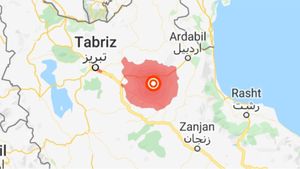WhatsApp has officially announced exciting new features enhancing its integration with ChatGPT, the AI chatbot powered by OpenAI. Users can now interact with ChatGPT not just through text but also via images and voice messages, marking significant progress since the text-only support was introduced last year. This expansive update was revealed on February 5, 2025, and is aimed at improving the user experience for WhatsApp's global audience.
The new features enable users to upload images and send voice recordings directly to ChatGPT, making it much easier to access information without the hassle of typing long questions. According to Android Authority, "With the new integration, you can now ask questions by sending images or voice messages!" This aligns perfectly with the growing trend of voice-activated commands and visual information processing, offering users unprecedented convenience.
How does it work? When users upload an image, ChatGPT processes the visual information and can provide insights or return answers related to the content of the image. For example, if you come across something confusing or want to understand text written on an image, you can simply send it to ChatGPT to get the answers you need. This was highlighted by Pradeep Pandey of Amar Ujala who emphasized, "This feature allows users to ask ChatGPT about anything related to images, even rating memes." So whether you’re grappling with complicated diagrams or cheeky memes, ChatGPT can assist right within WhatsApp.
Aside from enabling image interactions, this update also brings voice messaging capabilities. Previously, asking lengthy questions could be cumbersome, but now users can simply record their inquiries and send them. This is especially useful for those who are multitasking or prefer speaking over typing. "You no longer need to type out lengthy questions; you can simply send a voice message," stated Pandey, indicating the ease with which users can now engage with ChatGPT.
Nonetheless, it’s important to note how this feature functions under the hood. The images sent to ChatGPT will be processed on OpenAI’s servers, raising valid concerns about privacy. Users are advised to refrain from sharing personal or sensitive images, as these could potentially lead to privacy breaches.
Beyond these interactions, another noteworthy aspect is the ease of access to ChatGPT for users. OpenAI has issued the phone number +1-800-242-8478, allowing residents of the US and Canada to call and communicate with ChatGPT via voice, directly engaging with the AI without the need for typing. The availability of direct voice contact indicates OpenAI’s commitment to making interactions with ChatGPT as user-friendly as possible.
The ease of scheduling meetings has also seen improvements. WhatsApp is broadening its calendar management features, which were previously limited to group chats, now allowing users to create events directly within private chats. This integration simplifies the process of organizing meetings and setting reminders without switching between multiple applications, creating a more efficient user experience.
WhatsApp’s expansion of its capabilities reflects the competitiveness within the tech space, especially at a time when other companies, such as Apple, are rumored to be launching their own meeting management applications. The evolution of WhatsApp's features aims not only to retain current users but also to attract new ones by becoming indispensable for daily tasks and information retrieval.
Looking to the future, if these features prove successful, WhatsApp could solidify its position as a key tool for communication and management, fitting seamlessly within users’ daily lives. Most significantly, these enhancements come at a moment when conversational AI is on the rise, with more users seeking intuitive, flexible communication methods.
Overall, the upgrade to ChatGPT integration within WhatsApp introduces practical and innovative tools, enabling richer interaction mechanisms. Users can now answer questions, familiarize themselves with images, and engage through voice—further enhancing what was already one of the most popular messaging platforms out there.
WhatsApp continues to push boundaries, ensuring it remains not only relevant but also integral to how users manage their communication and productivity. This is just the beginning of what could be a transformational era for messaging applications as they begin integrating more advanced AI capabilities.



